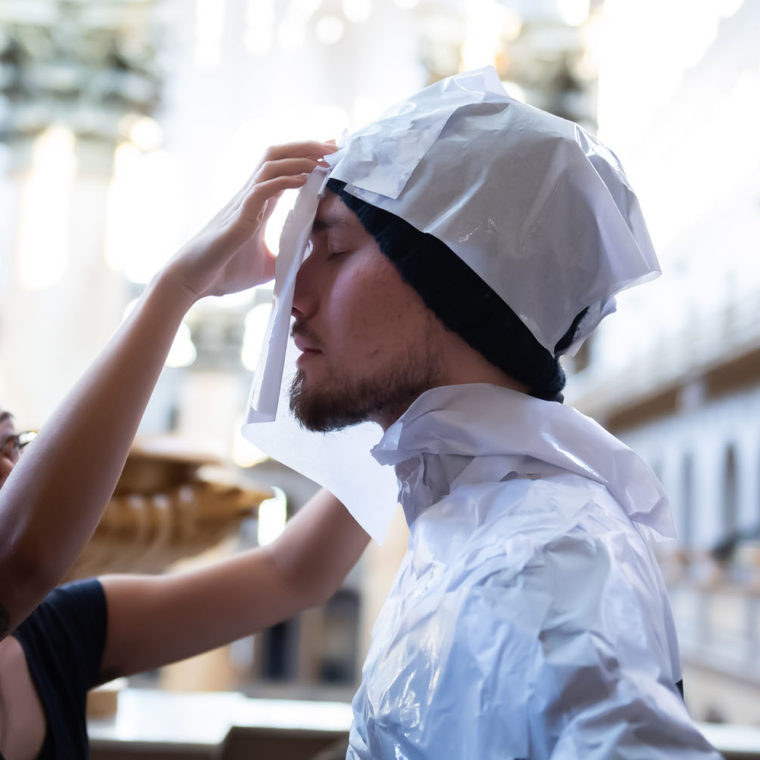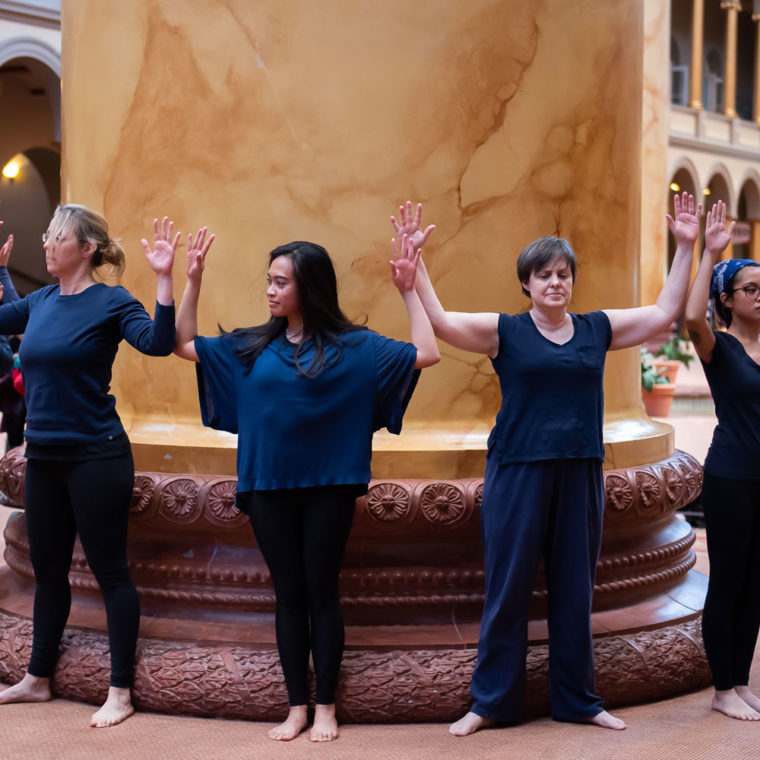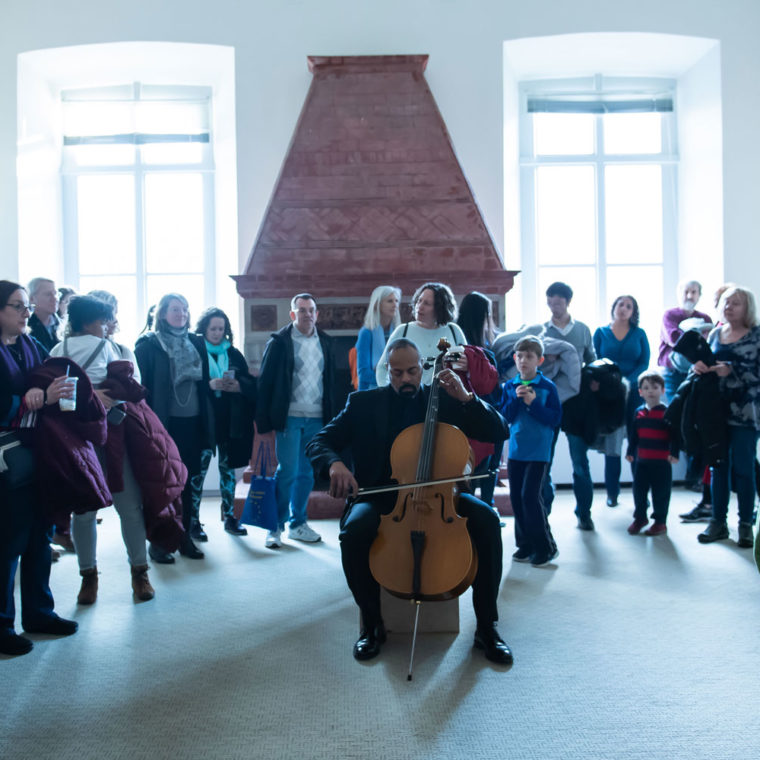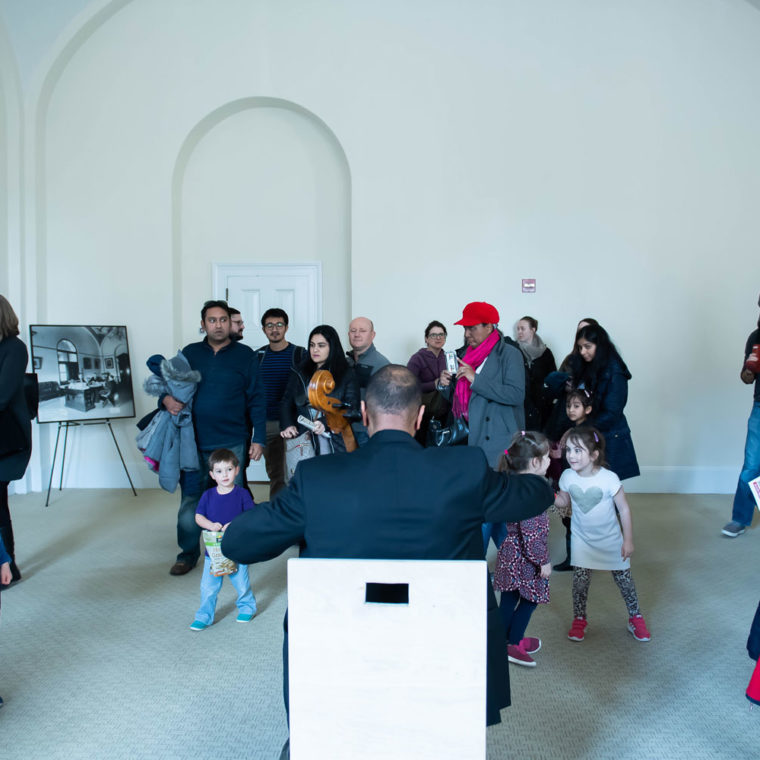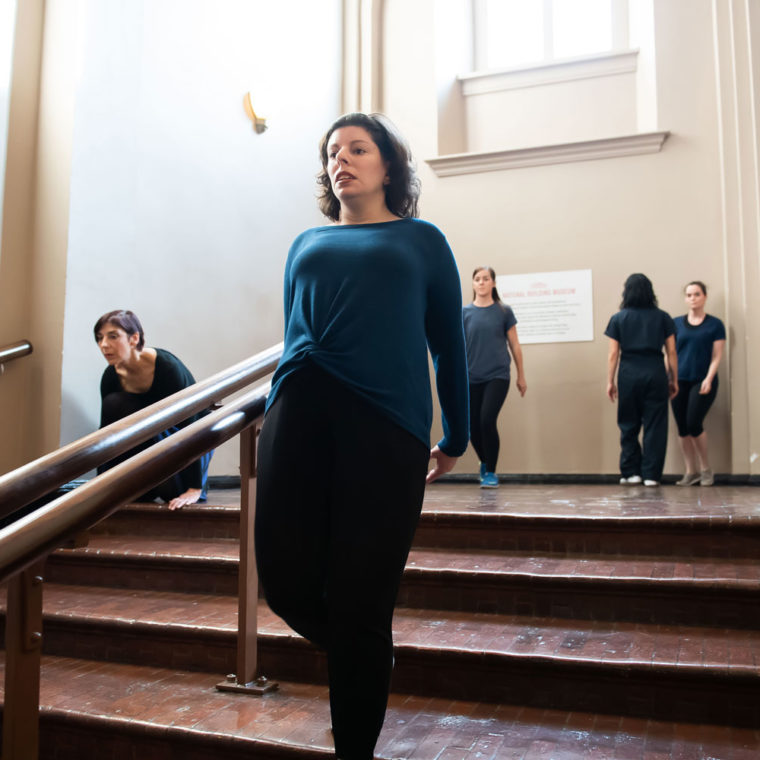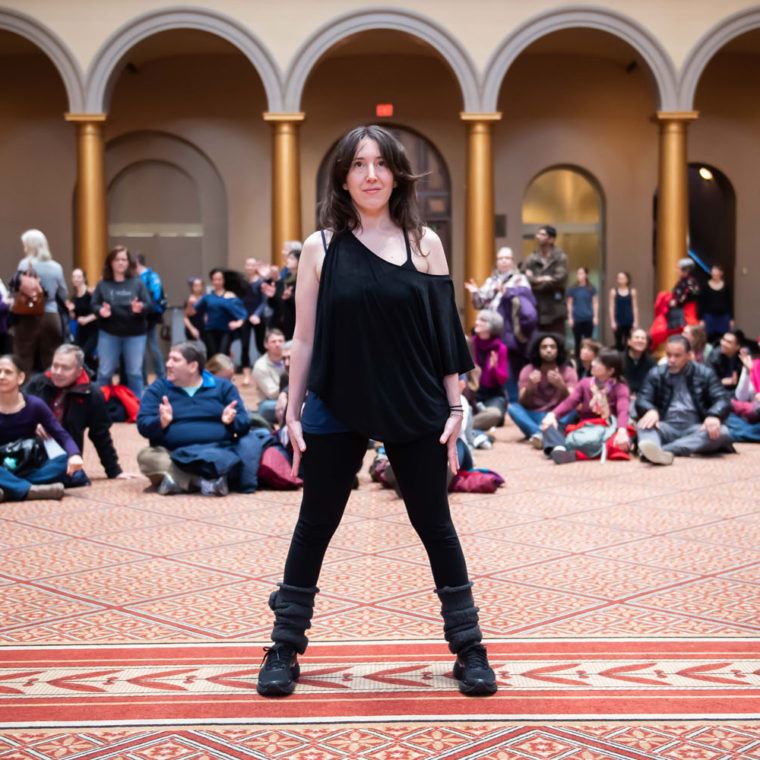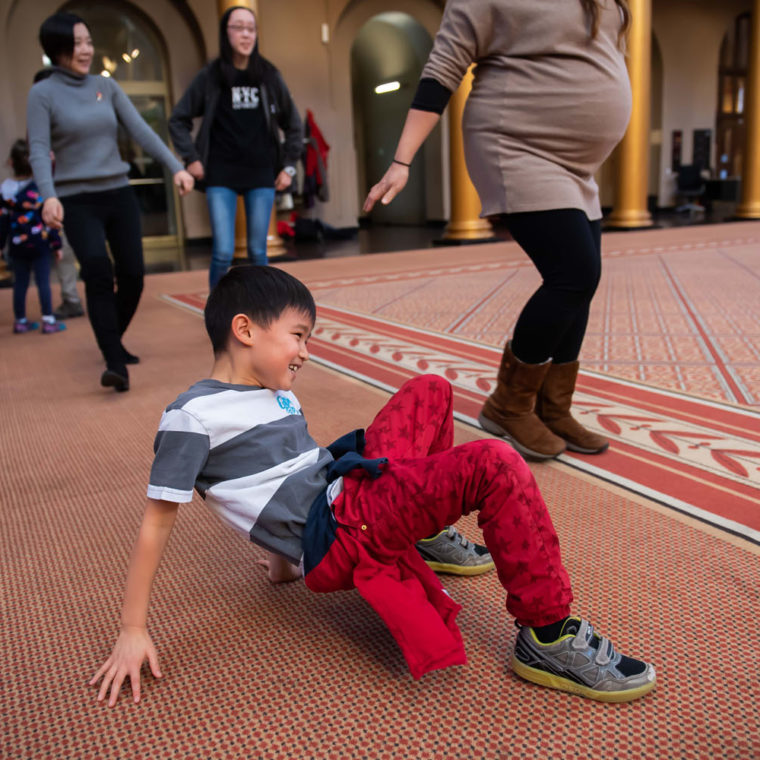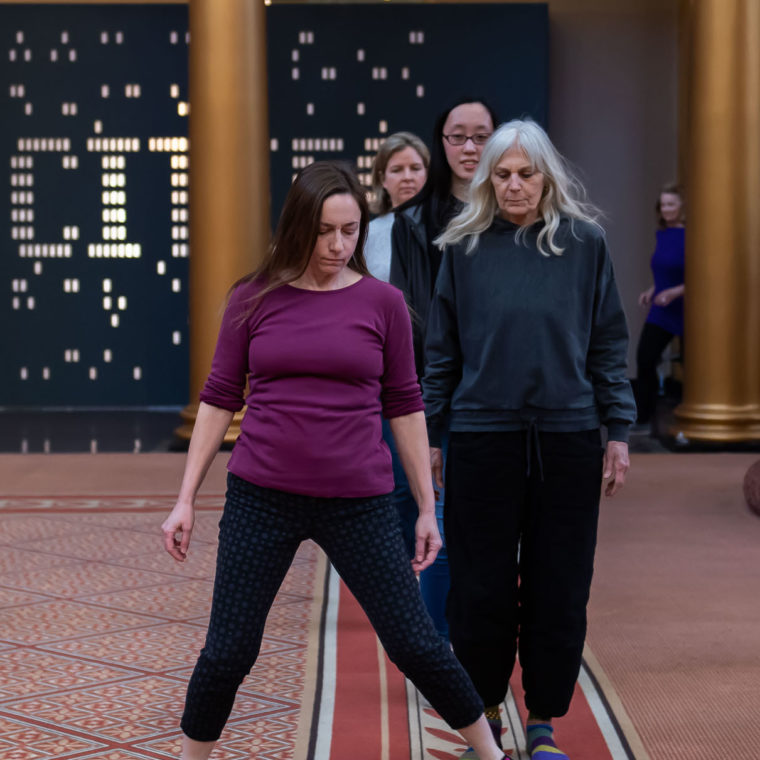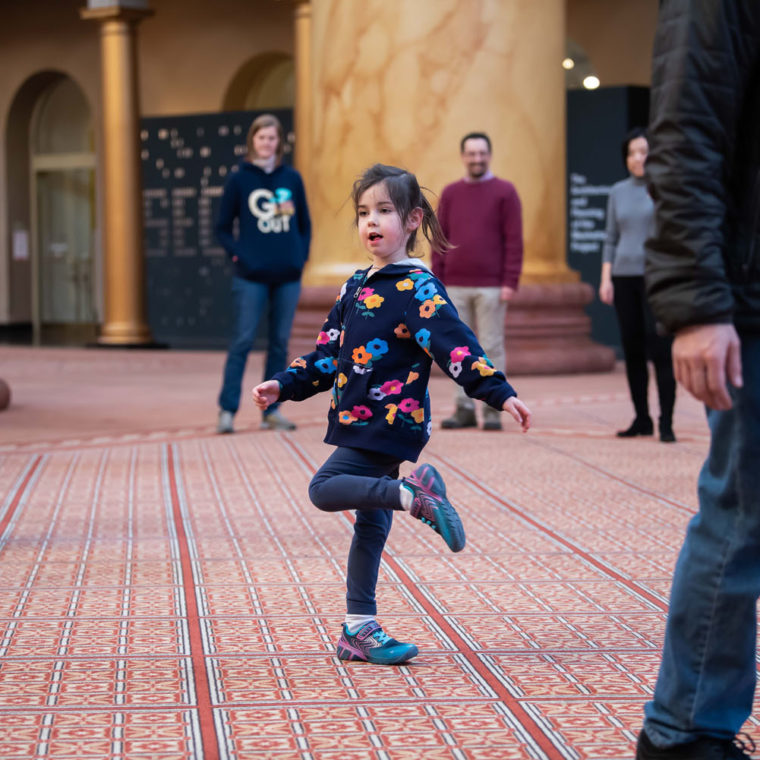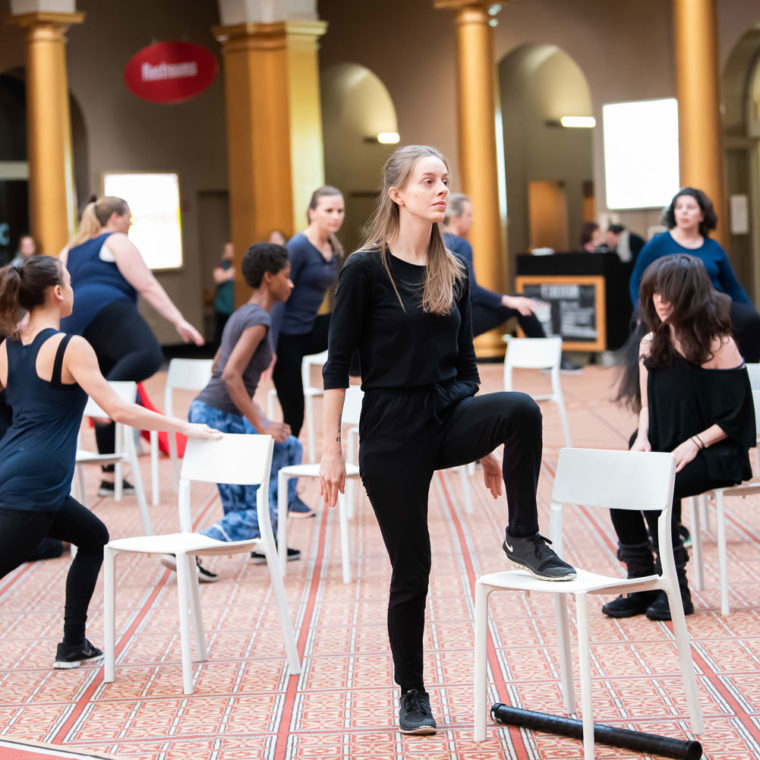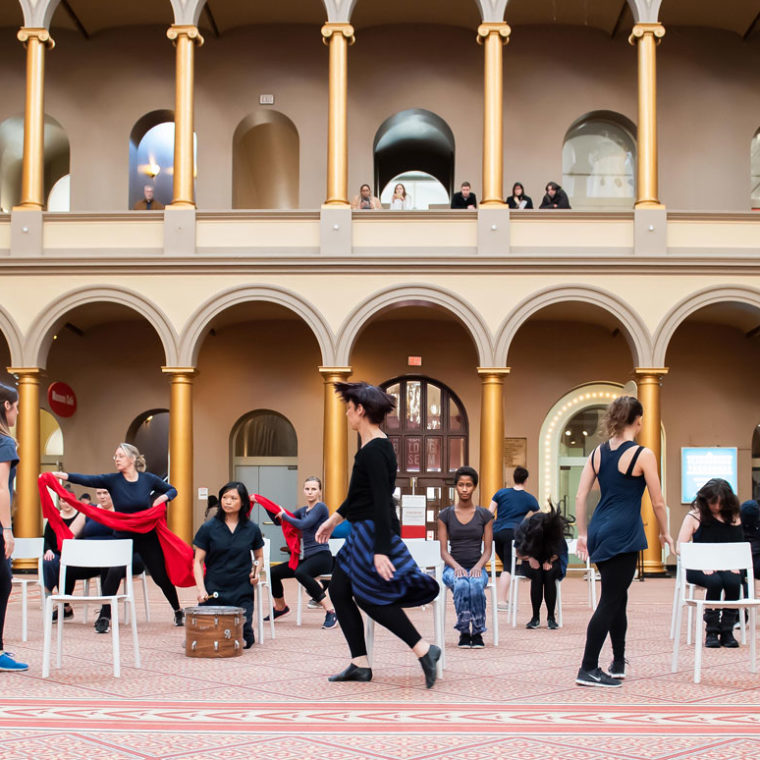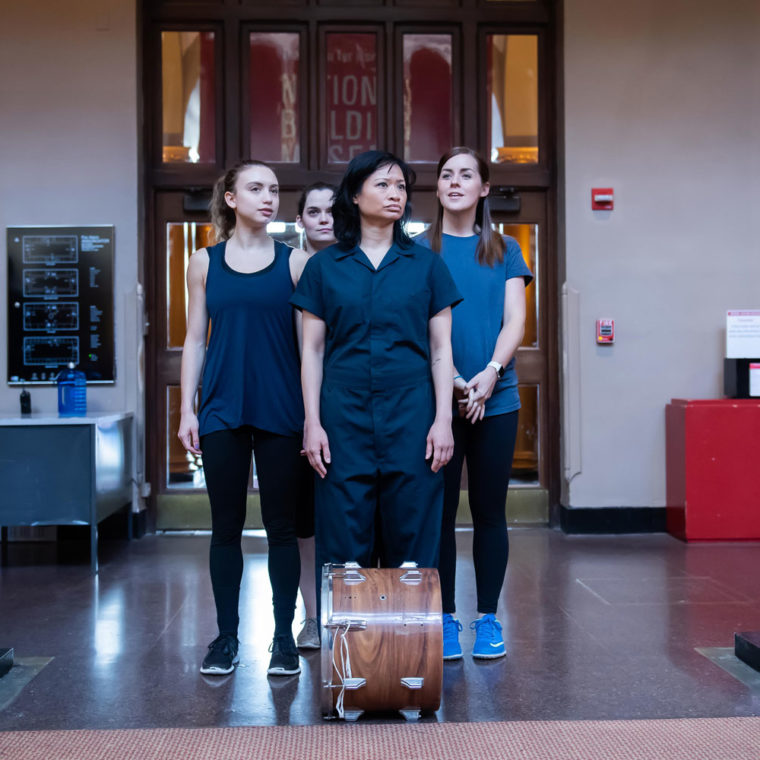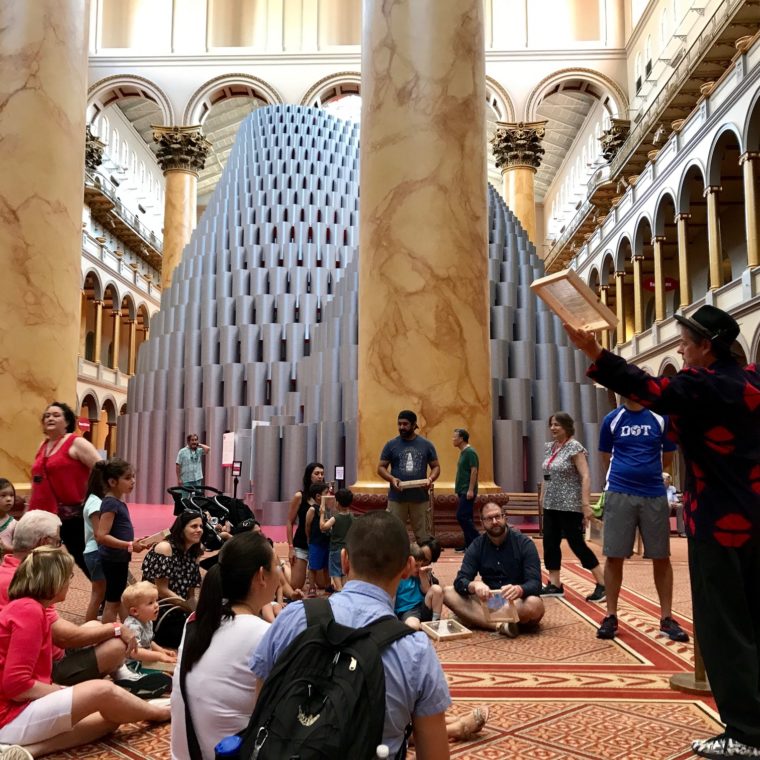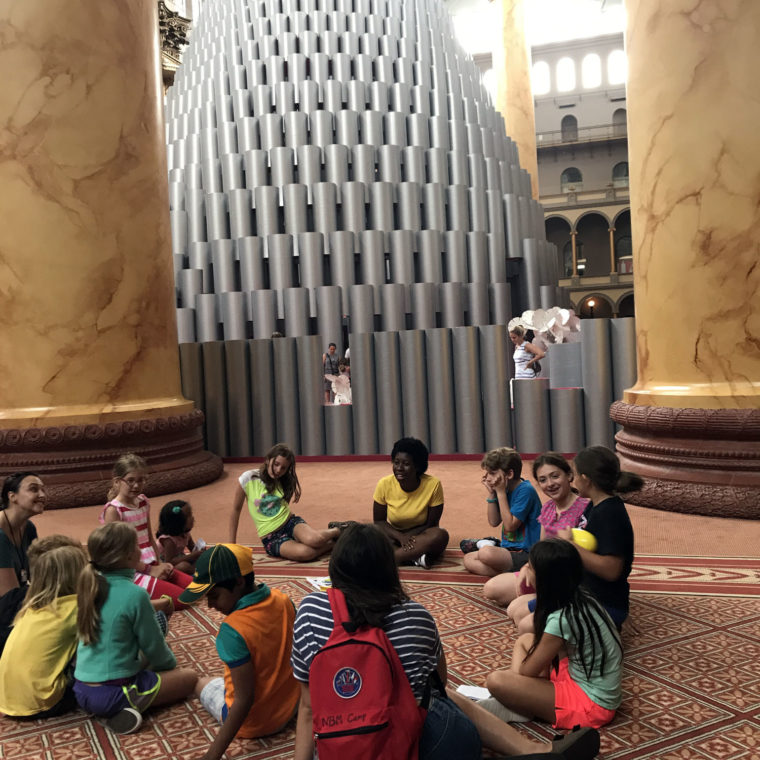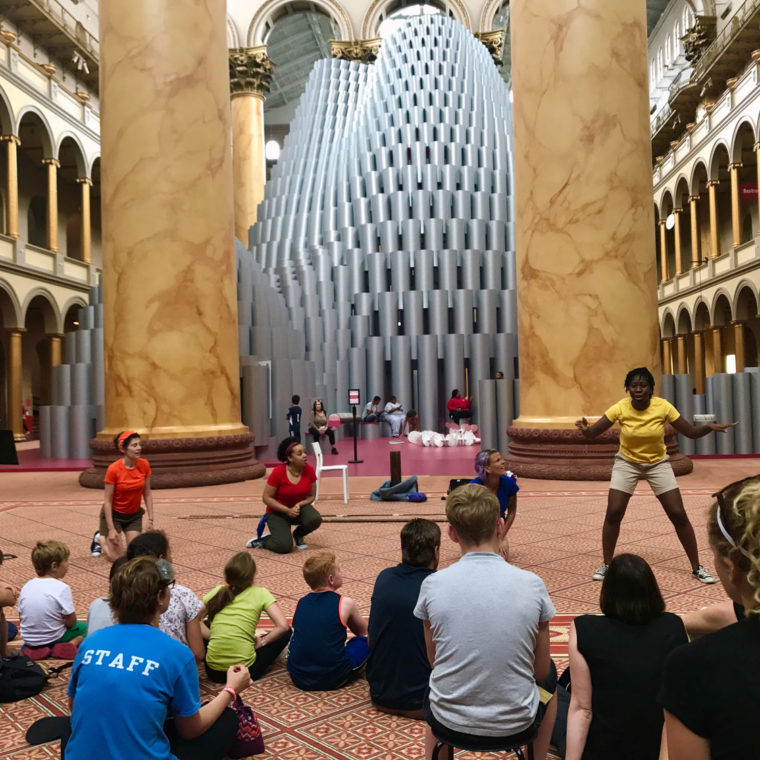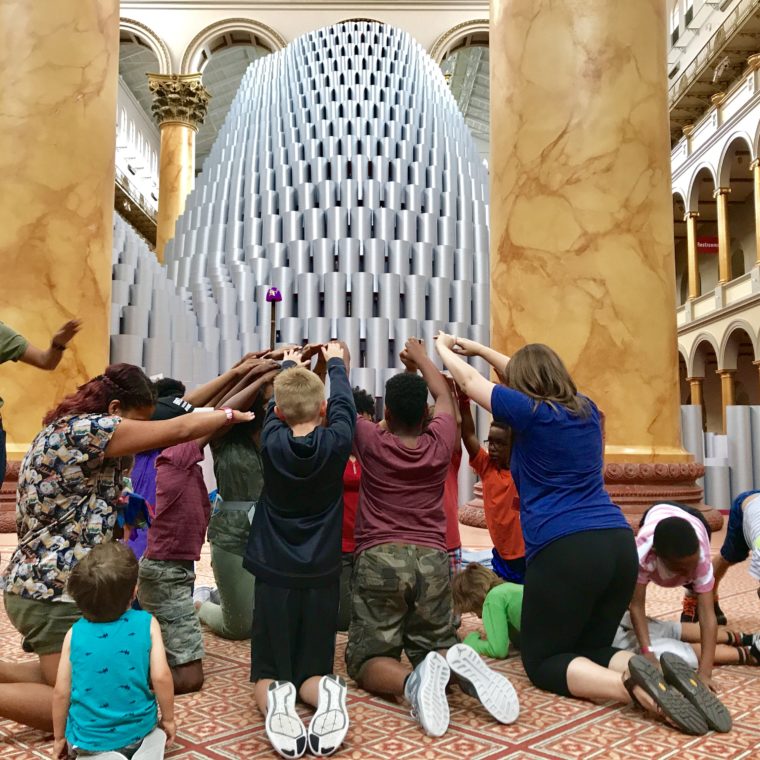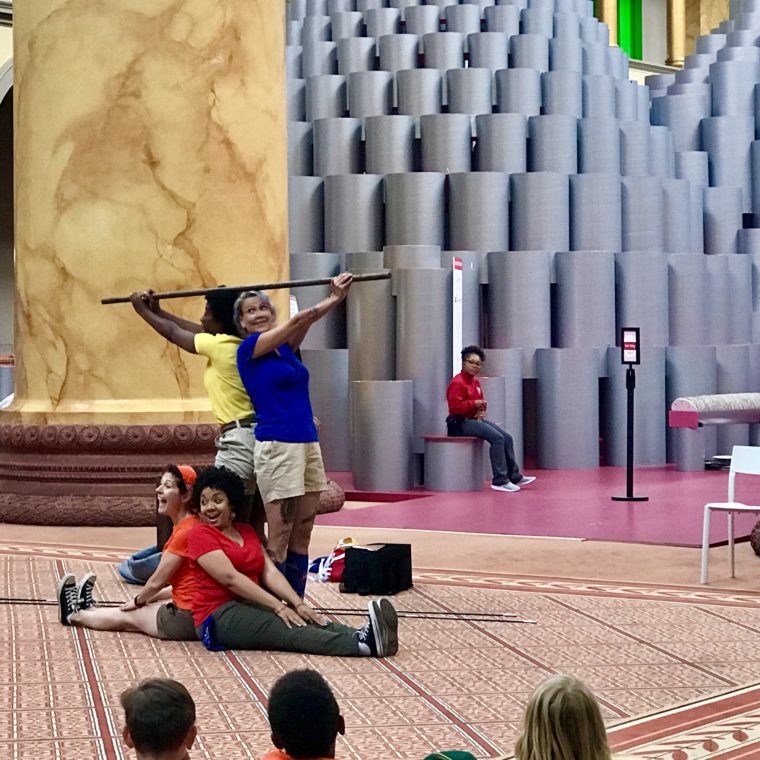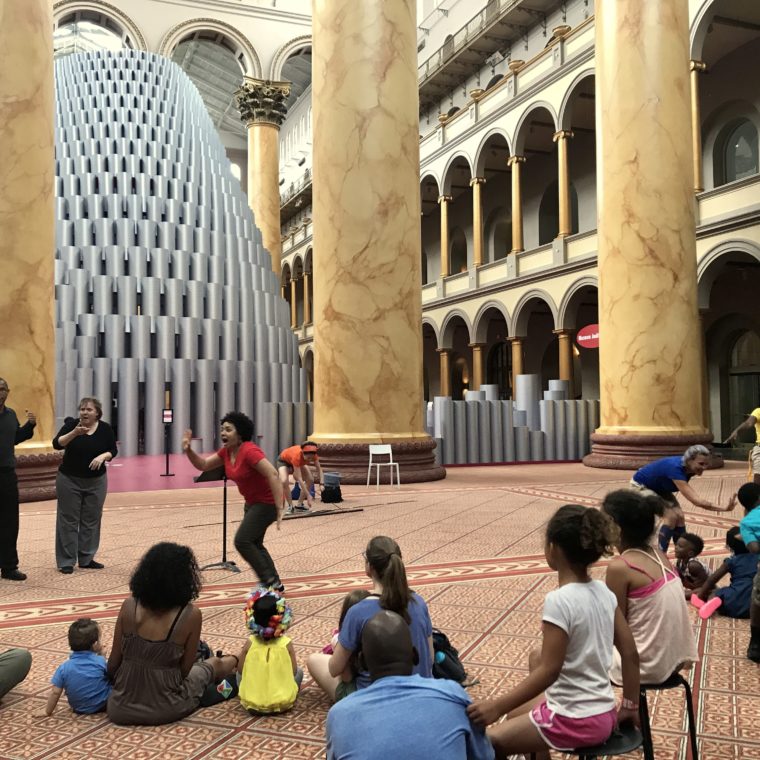This program is currently not available. We hope to offer it again as soon as we are able to.
The Museum works with creative individuals and artist groups of all disciplines who are interested in collaboration with Museum staff and communities, open to developing new methods and works, and excited to use their media to shed light on new ways of seeing and understanding design, architecture, construction, and social/cultural built environment topics. With unprecedented and unlimited access to the Museum’s rich collection and cutting-edge exhibitions, residents develop and complete a new work anchored in teachable experiences.
Heather Sultz – 2019
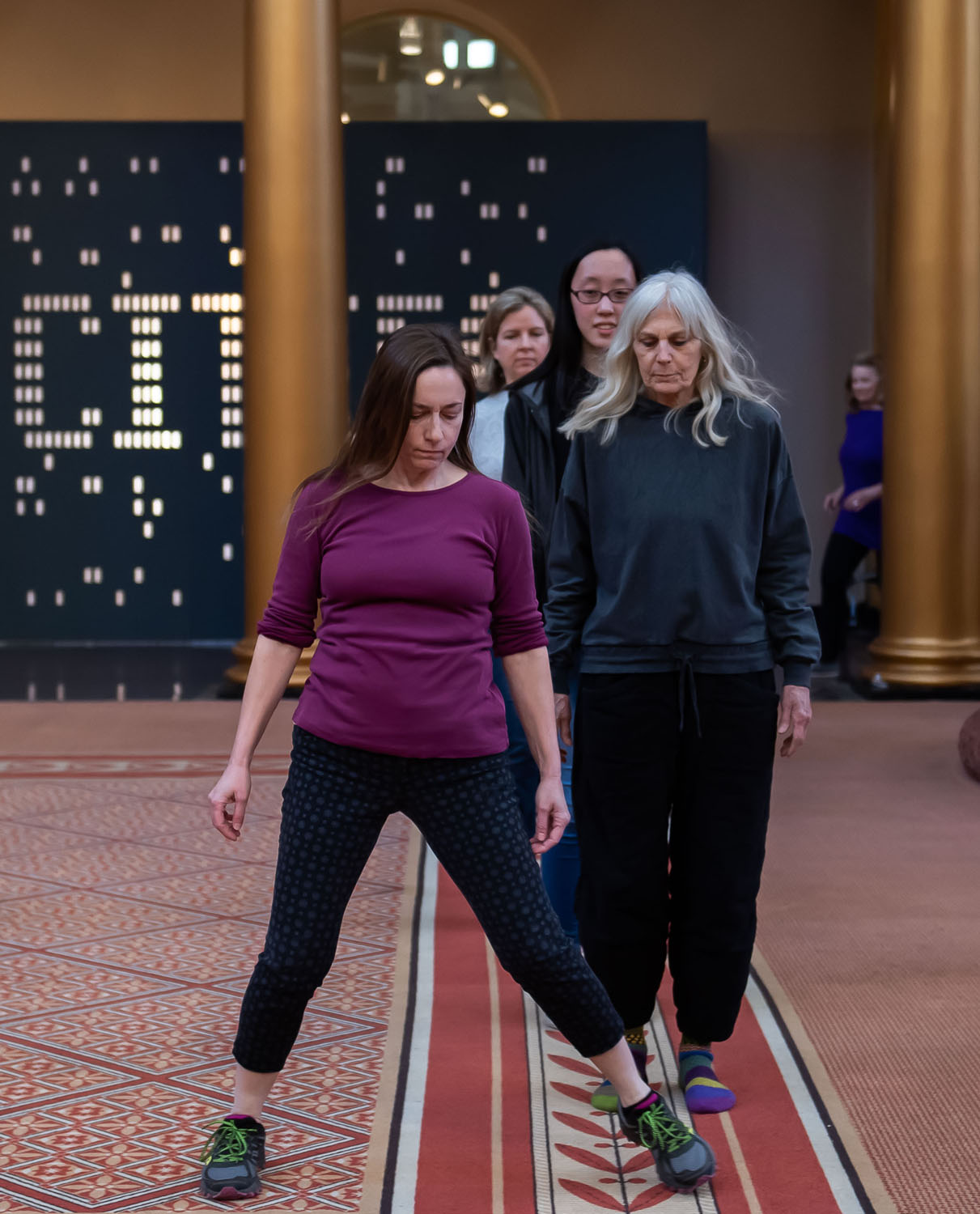
Heather Sultz joined the Museum in January 2019 for unique opportunities to explore and learn about the Museum’s historic building. Over her two-week residency on site at the Museum, Sultz brought together dancers, performers, and community members from a wide variety of fields—visual arts, architecture, science, social work, education, dance, theater—to co-create an original movement piece. Transits & Passages. In addition, she led improvisational movement workshops for teens and mixed-age groups and presented an Evening with the Artist conversation.
For her residency, Sultz and the performers were provided special access to public areas of the building and given special permission to integrate the building into the piece. Transits & Passages took place on all four floors of the building, drawing on the history of the Museum as a space built for Civil War pensioners, the architectural aspects of the site, the Museum’s historical collections, and the creativity of the DC-based community of performers. As an
exploration of human movement in built space, the audience moved with the performers, guided by Museum ushers and the performers. Sultz also collaborated with musicians Tommie Adams, Jr., Steve Bloom, and Greg Watkins in this piece.
Sultz is a performer, choreographer, and educator. One of her earliest memories is an improvisational performance in front of the Milles fountains in downtown St. Louis around age three. She has performed with various dance companies around the country and abroad, and presents her own choreography through her company SultzDance. She now specializes in site-specific work, exploring architectural and environmental spaces through movement. She is Director of Keyhole Residencies, an organization connecting communities to their environments through movement exploration, and has been invited to work with various organizations, including One Year Lease Theater Company, The American Institute of Architects Committee on Architecture for Education, Evergreen Museum, the National Museum of Wildlife Art, and the Frank Lloyd Wright site Fallingwater. In addition, her work as an actor has been seen at film festivals including Sundance and the Berlin Film Festival. In 2015 she was named Webster University’s Leigh Gerdine College of Fine Arts Outstanding Alumna. A teacher of movement and the creative process, Heather holds an MFA in Dance from Ohio State University, and has taught at numerous universities and schools. She was founding Chair of the Department of Dance at Georgian Court University in New Jersey.
Steve Bloom – 2017
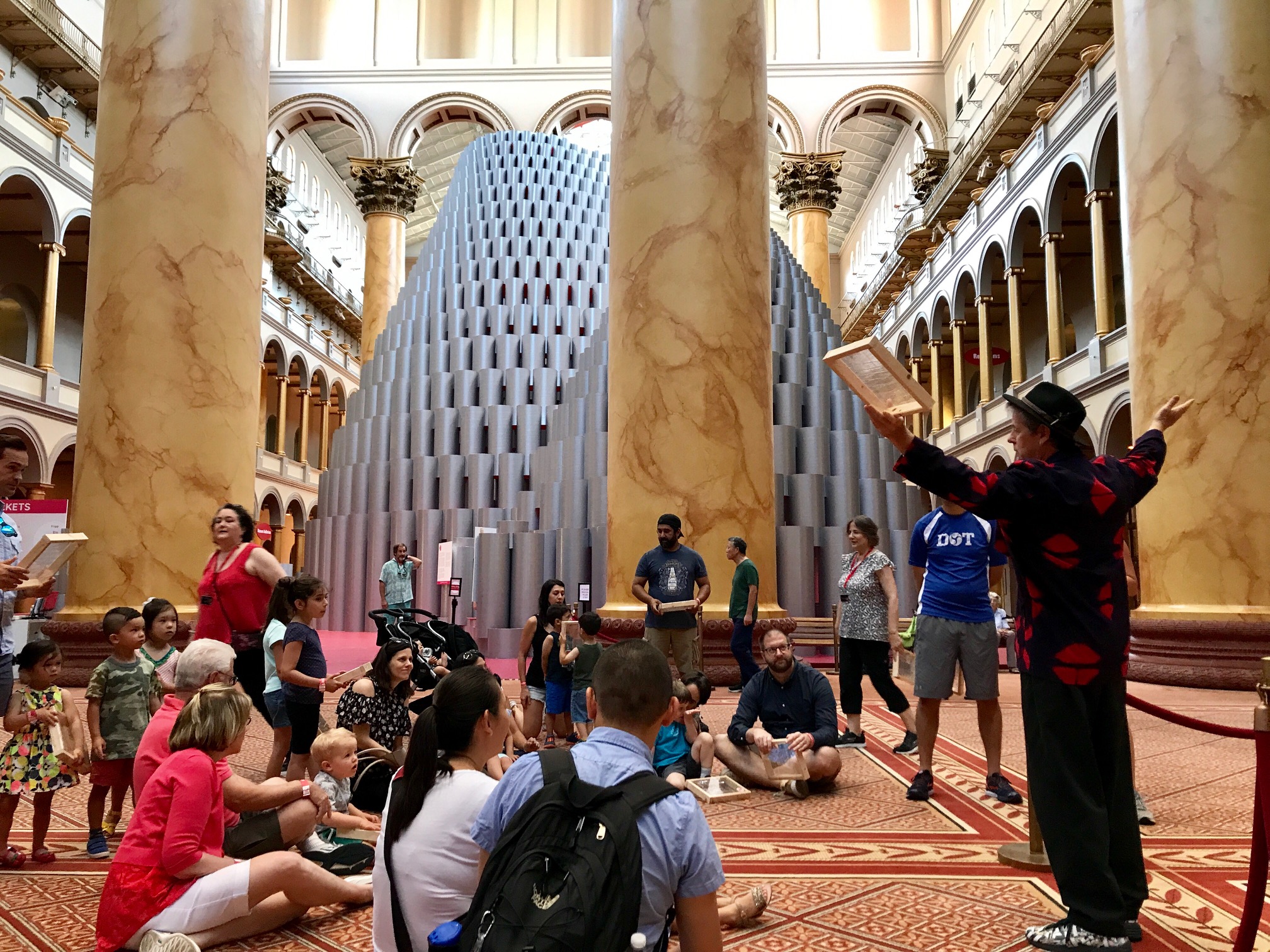 Steve Bloom designed original acoustic explorations for all ages, inspired by the Museum’s 2017 Summer Block Party, Hive. In the guise of the fictional Professor Giuseppe, Master Concatenator, Bloom guided groups on an aural journey with synchronized group drumming and vocals though the Museum’s Great Hall, stairwell, and Pension Commissioner’s Suite to compare sounds and vibrations in different architectural spaces. In addition, Bloom
Steve Bloom designed original acoustic explorations for all ages, inspired by the Museum’s 2017 Summer Block Party, Hive. In the guise of the fictional Professor Giuseppe, Master Concatenator, Bloom guided groups on an aural journey with synchronized group drumming and vocals though the Museum’s Great Hall, stairwell, and Pension Commissioner’s Suite to compare sounds and vibrations in different architectural spaces. In addition, Bloom
worked with acoustic engineer John Tewksbury to design and create the tubular instruments and chimes in Hive. In 2019, Bloom served as a music consultant to Creative in Residence Heather Sultz.
Bloom has played percussion professionally in thousands of performances and recordings in multiple international styles. He launched his professional drumming career in 1969 and has performed and/or recorded in over a dozen countries. His work in Afro-Cuban folklore, Celtic music, and in Persian percussion has taken him to the Lincoln Center, top-tier folk festivals around the U.S., and performing for the United National General Assembly, presented by Ban Ki-Moon.
dog & pony dc – 2016 and 2017
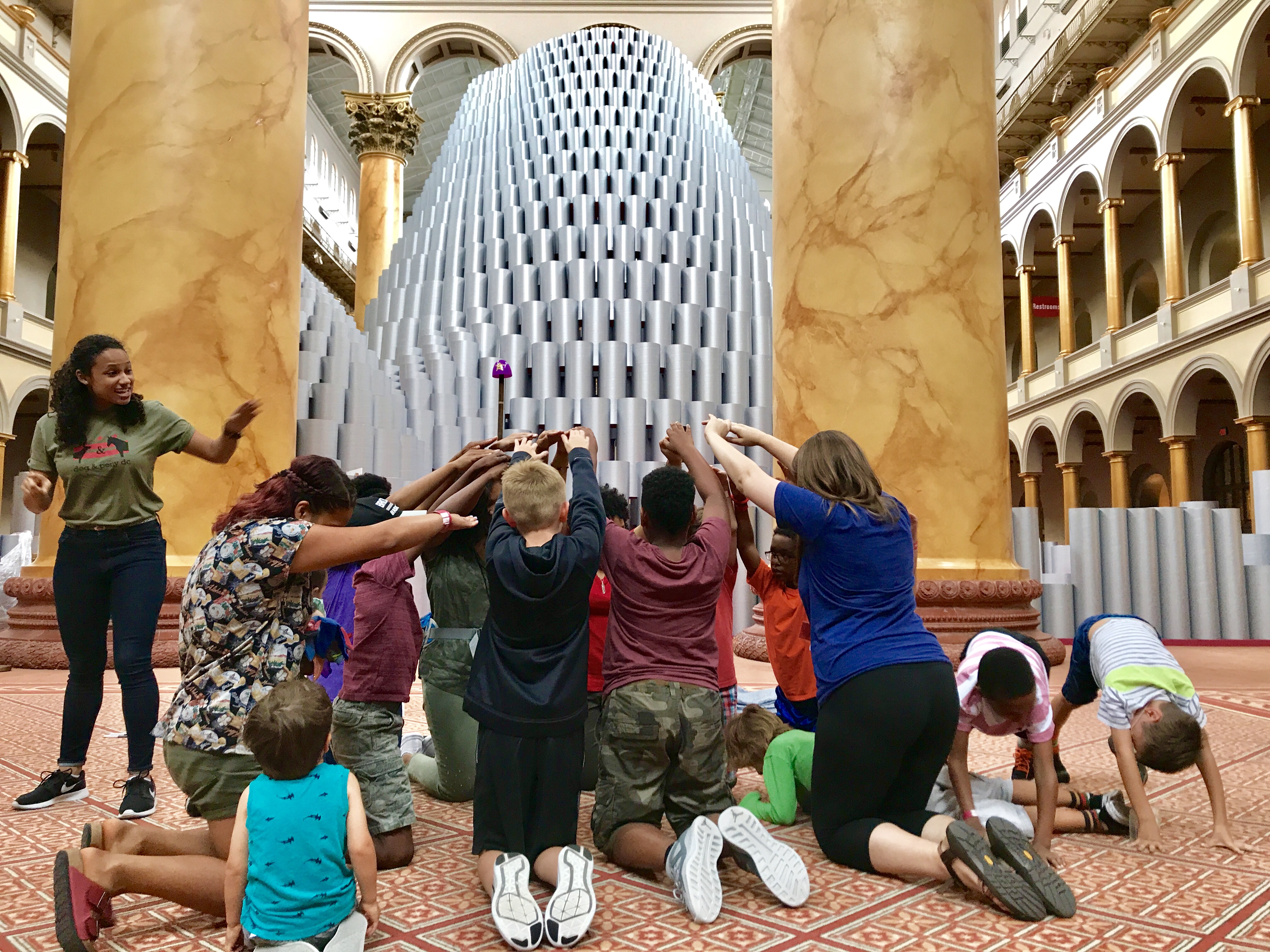 The theater collective, dog & pony dc, partnered with the Museum in conjunction with the 2016 Summer Block Party, ICEBERGS, and the 2017 Summer Block Party, Hive. In 2016, they created and produced a complete set of Late Night programs called collectively flip the ‘berg, inviting visitors of all ages to interact with and investigate the installation and related ideas from all perspectives. In the guides of scientists and technologists seeking to advance the relationship between people and nature, they amplified James Corner Field Operations’ undercurrent theme of global climate change through three “ARTctic Adventures” (30‑min workshops) and eight “ARTctic Activities” (participatory exhibits).
The theater collective, dog & pony dc, partnered with the Museum in conjunction with the 2016 Summer Block Party, ICEBERGS, and the 2017 Summer Block Party, Hive. In 2016, they created and produced a complete set of Late Night programs called collectively flip the ‘berg, inviting visitors of all ages to interact with and investigate the installation and related ideas from all perspectives. In the guides of scientists and technologists seeking to advance the relationship between people and nature, they amplified James Corner Field Operations’ undercurrent theme of global climate change through three “ARTctic Adventures” (30‑min workshops) and eight “ARTctic Activities” (participatory exhibits).
In 2017, dog & pony dc returned for a more in-depth residency in which they wrote, produced, and performed an original play, Discovered! The Amazing Untold Story of Caternarians, inspired by Hive’s catenary arch structure. This play was designed by hearing and Deaf artists and included sign-language interpretation at each performance.
dog & pony dc is a Washington DC-based devised theatre company and a national leader in audience engagement. They create (“devise”) new plays and interactive experiences as a collective (“ensemble”) of hearing and Deaf artists. Guided by their mission to inspire self-discovery, forge new relationships, and champion social change, the collective creates interactions that connect people in unexpected ways to each other, art, and the wider world. Since 2000, dog & pony dc has devised ten original shows—including seven world premieres and two adaptations—that span a wide stylistic range. The audience is an active participant in the creation of each live event.
Maida Withers
Dance Exchange
Gallery
Creative in Residence is supported in part by:


